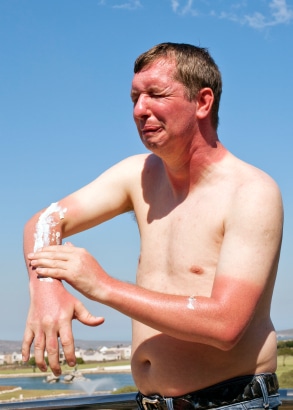 This study published in the Archives of Dermatology looked at non-genetic, or environmental factors contributing to skin aging. Studying twins is the ideal way to eliminate genetic factors involved in a disease process. The study was performed on 65 pairs of twins attending the annual Twins Day Festival in Twinsburg, Ohio. I mention that mainly because I lived in Twinsburg for one year.
This study published in the Archives of Dermatology looked at non-genetic, or environmental factors contributing to skin aging. Studying twins is the ideal way to eliminate genetic factors involved in a disease process. The study was performed on 65 pairs of twins attending the annual Twins Day Festival in Twinsburg, Ohio. I mention that mainly because I lived in Twinsburg for one year.
Identical and fraternal twins were included in the study. Up to 40% percent of skin aging is felt to be related to non-genetic factors like smoking and sun exposure.
Skin aging is often caused by exposure to the sun, also known as photo-aging. Photo-aging is the result of UV or ultraviolet exposure and is characterized by coarsely wrinkled skin, changes in skin pigmentation and telangiectasia (small dilated blood vessels near the surface of the skin).
Skin Aging Factors Studied
The study analyzed the effects of the following on skin aging.
- Fitzpatrick type
- History of skin cancer
- Smoking and drinking habits
- Body weight
Results
A prior history of skin cancer contributed most to skin aging followed by increased body weight and then smoking. Interestingly alcohol consumption was associated with lower scores of photodamage and other studies have shown no correlation between alcohol consumption and skin aging. This study did not question the participants as to the type of alcohol they drank. But, some forms of alcohol like red wine contain resveratrol and other anti-oxidants which are beneficial to skin health.
Several studies have linked smoking to premature skin aging. This is the result of the fact that smoking decreases blood flow, inhibits collagen synthesis, and accelerates collagen break-down giving skin, especially on the face that leathery look.
Avoid Premature Skin Aging
To have healthy skin – to avoid premature skin aging do the following. Avoid smoking and keep your weight down. Be sure to protect your skin from ultraviolet radiation by staying well-hydrated and by using sunscreens if you’re susceptible to burning from sun exposure.
Low-grade inflammation (sometimes known as Silent Inflammation) contributes to skin burning from sun exposure and is frequently the result of the American diet which is characterized by excessive amounts of inflammation omega-6 fatty acids and inadequate amount of anti-inflammatory omega-3 fatty acids.
See the following articles.
“The Role of the Sun in the Aging Process”
“Skin Protection from the Summer Sun”
